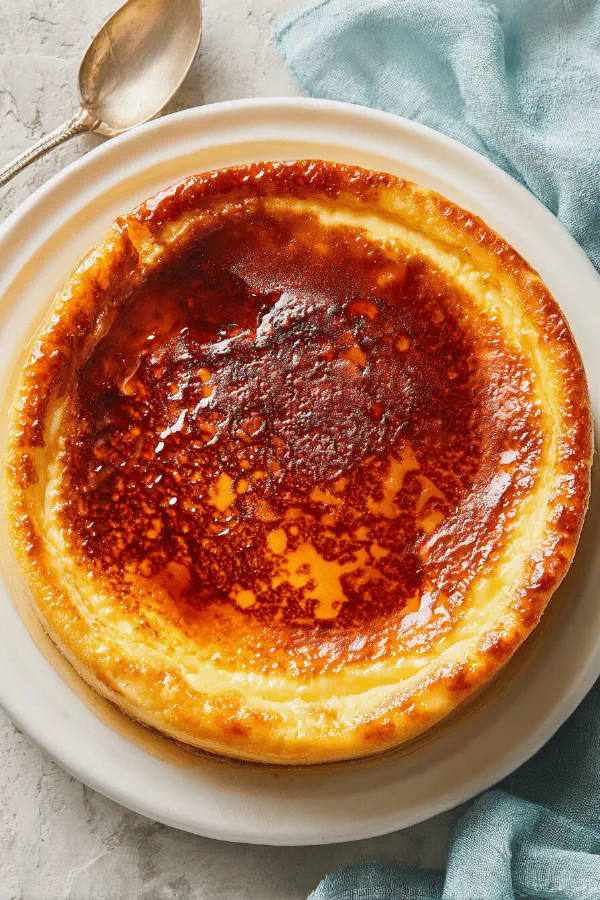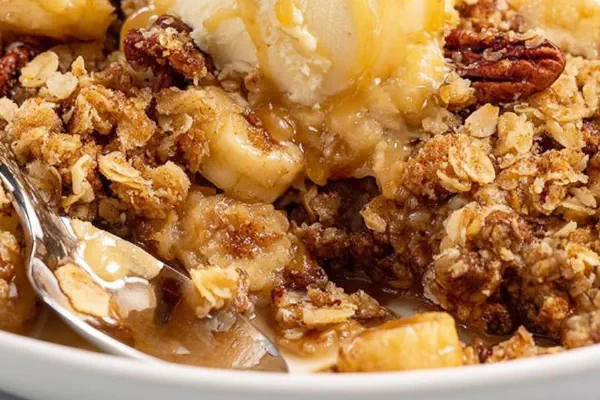Featured Recipe
Classic Parisian Flan Revamped

By Kate
"
Traditional French flan with inventive touches. Crust made with a blend of flour and potato starch for extra crispness, swapped cider vinegar for lemon juice. Filling gets a twist with coconut milk alongside cream for subtle richness. Thickened with arrowroot instead of cornstarch for clarity. Baked until golden caramelized top develops. Requires sharp eye on dough texture and precise custard cooking to avoid curdling or cracking. Set overnight for best slice and mouthfeel.
"
Prep:
60 min
Cook:
Total:
Serves:
10 to 12 portions
French cuisine
desserts
baking
flan
custard
Introduction
Flan Parisien, classic custardy tart. But tweaks needed in your kitchen: humidity, oven quirks alter results. Switch cornstarch for arrowroot to avoid cloudiness. Coconut milk mingles well to deepen flavor complexity while preserving silkiness; subtle tropical note, no gimmicks. Dough isn’t just bland platform, the addition of potato starch lifts texture, making it delicate but firm enough. Folding dough layers builds flakiness; each rest in cold rooms gives you grip for shaping. Heat control on custard thickening breaks or curdle if rushed, slow heating with constant stirring can save it. Caramel color comes from patient, focused baking, smell cues signal readiness more than timer. Chilling pigment sets slices firm but moist, no rushed cuts here. Integrate basics, respect sensations, learn when to trust your senses.
Ingredients
Crust
- 280 g (2 cups) unbleached all-purpose flour
- 30 g (3 tbsp) potato starch
- 3 ml (1/2 tsp) salt
- 160 g (2/3 cup) unsalted butter, cold, diced
- 140 ml (9 tbsp + 1 tsp) ice water
- 10 ml (2 tsp) fresh lemon juice
- 600 ml (2 1/2 cups) whole milk
- 250 ml (1 cup) coconut milk, canned, full fat
- 1 vanilla bean, split and seeds scraped
- 140 g (2/3 cup) granulated sugar
- 35 g (1/4 cup) arrowroot powder
- 2 large eggs
- 4 large egg yolks
Filling
About the ingredients
Flour + potato starch creates texture contrast in dough; starch tenderizes without weakening. Lemon juice swaps cider vinegar; acid balances fat, keeps gluten relaxed. Butter must be cold dice, room temp ruins layering. Water ice cold for minimal gluten activation. Coconut milk (full fat) adds richness offsetting reduced cream. Vanilla bean preferred; powder less fragrant. Sugar amount trimmed slightly after trial, prevents over sweetness masking custard’s nuance. Arrowroot selected for clarity and stability as substitute for cornstarch; beware high heat thickening too aggressively. Eggs and yolks blend body and silkiness. Store eggs cold, room temp eggs improve emulsification but risk. Ingredients precise, quality impacts outcome more than timing alone.
Method
Dough Prep and Laminating
- Mix flour, potato starch, salt in a large bowl. Cut butter in using fingertips — look for chunky pieces surrounded by flour. Cold butter here builds delicate layers, giving flaky texture; don’t overwork to avoid melting.
- Add ice water gradually with lemon juice. Mix just until dough sticks. Should be tacky, slightly shaggy but no dry flour visible. Too wet? Add tiny flour pinch. Too dry? Splash more water. Touch important for flaky crust.
- On floured surface, roll dough roughly into 30 x 22 cm rectangle. Brush off excess flour—key for folding layers without false dryness. Fold into thirds like a letter, then fold in half perpendicular. Wrap tight in plastic. Chill minimum 40 min — dough must firm to hold layers. Refrigerate longer if warm kitchen.
- Center oven rack; preheat oven to 195°C (385°F).
- Roll chilled dough circle about 31 cm diameter, slightly larger than 20 cm pan. Don’t stretch, slow even strokes keep layers intact.
- Transfer gently into 20 cm springform pan. Press to edges, no tears. Trim excess; fold edges slightly under, pinch for neat rim.
- Dock bottom with fork to prevent bubbles, freeze 20 min — this prevents shrinkage during bake.
- Line dough with foil, load ceramic baking beads or dry beans for even weight distribution.
- Bake beads covered 28 min. Remove beads and foil carefully—crust should appear pale, edges firm. Bake another 12-15 min uncovered until base no longer glossy and edges golden brown. Let cool 20 min at room temp.
- Combine cow milk, coconut milk, and vanilla seeds + pod in heavy saucepan. Heat slowly to just caveman bubbles on edge (gentle simmer). Remove from heat and infuse 10 min. The aroma will be rich, perfumed.
- In medium bowl, whisk sugar arrowroot powder, whole eggs, yolks vigorously until smooth. Important for no lumps, arrowroot blends nicely for clear shine in finish.
- Remove vanilla pod from infused milk mixture. Slowly drizzle hot milk into egg mixture while whisking continuously — tempering vital to avoid scrambled eggs. Don’t stop until half the milk incorporated, then add rest gradually.
- Pour back into saucepan. Cook over medium-low heat, stirring constantly with heatproof spatula, scraping base and sides to prevent scorching. Mixture thickens; look for custard that coats spatula with thin film. Trust your whisk; if it jiggles but holds, you’re near the right point.
- Immediately remove from heat once thick, pour into baked crust. Surface should look glossy and even.
- Place flan on middle oven rack. Bake ~52 min; watch caramelization on top for dark golden with some crackling spots. Too pale = undercooked, too dark = bitter burnt notes. Smell changes as sugar caramelizes, a key indicator.
- Remove oven, let cool 40 min—custard sets, crust settles. Then refrigerate uncovered 7–9 hours for custard to firm fully. Cover after cooling once really cold to avoid condensation sogginess.
- Best sliced cold with thin, sharp knife wiped between cuts for clean slices.
- Sub coconut milk with whole cream if allergic or prefer classic dairy flavor. Potato starch can go replaced with rice flour but texture changes visually.
- Keep dough cold always. If warm, chill repeated. Hot kitchen? Work fast, chill longer.
- If custard splits, strain through fine sieve and bake again in water bath to smooth. Use heavy pan to avoid hot spots.
- Cool crust before filling, this avoids soggy bottom from hot custard.
- Resist covering early in fridge; condensation ruins crust. Wait till set.
Shaping and Blind Baking
Custard Prep and Tempering
Baking and Cooling
Serving and Tips
Technique Tips
Starting with dry ingredients and cold fats ensures flaky crust; over mixing bites integrity. Chill dough twice: initial cold to firm fat layers, second freeze to prevent shrinkage during blind baking. Docking inhibits air bubbles, avoiding crust bubbles and breaks. Baking with ceramic beads confines heat and weight, stops puffing. Custard temp control critical—too cool traps lumps, too hot cooks eggs prematurely. Whisk, scrape as mixture thickens to prevent scorching, keep eye on texture changes not just time. Pour hot custard carefully into cool crust to avoid collapsing layers. Final bake caramelizes sugar; watch color, peek for faint crackle sounds, signature of sugar transforming. Cooling at room temp before cold fridge avoids condensation, which sours texture. Patience key; moisture and temperature interplay decides flan fate. Always test slices, smell aromas, tune visual clues rather than clock alone.
Chef's Notes
- 💡 Dough texture's king. Cold butter, ice water, no overmixing. Why? Gluten gets tough. Keep it flaky, handle gently. Too wet? Add flour. Too dry? Splash on more water. Key for rolling. Patience matters.
- 💡 When blind baking, use beans or ceramic weights. Stops shrinkage while cooling. Dock bottom before freezing, bubbles happen. Prevent that. Watch edges brown. Not golden? Another minute or two. Keep eyes peeled.
- 💡 Custard's temp control crucial. Heat milk slowly; peek for bubbles. Whisk eggs vigorously—smoothness is key. Drizzle hot milk gradually while whisking. Prevent lumps. Stir continuously over low. Look for coating on spatula.
- 💡 Cooling is a must. Let the flan rest for 40 minutes post-bake. Then refrigerate uncovered. Condensation ruins crust. Be patient. Set overnight for best slices. Don’t rush the chilling.
- 💡 If custard splits during cooking, strain through a fine sieve. Bake again in a water bath if needed. Hot spots cause issues. Heavy pan helps even heat.
Kitchen Wisdom
Why did my crust shrink?
Used warm dough? Keep it chilled. Add weight while blind baking. Avoid rolling too thin. Preserve layers.
Got lumps in custard?
Probably cooked eggs too fast. Lower heat next time. Whisk harder with eggs and sugar before adding hot milk. Gradual.
Should I cover while cooling?
No. Condensation creates sogginess. Let it cool at room temp first. Then refrigerate.
How can I store leftovers?
Best kept in the fridge, covered after cooling down fully. Alternatively, freeze but texture changes. Thaw overnight before serving.



